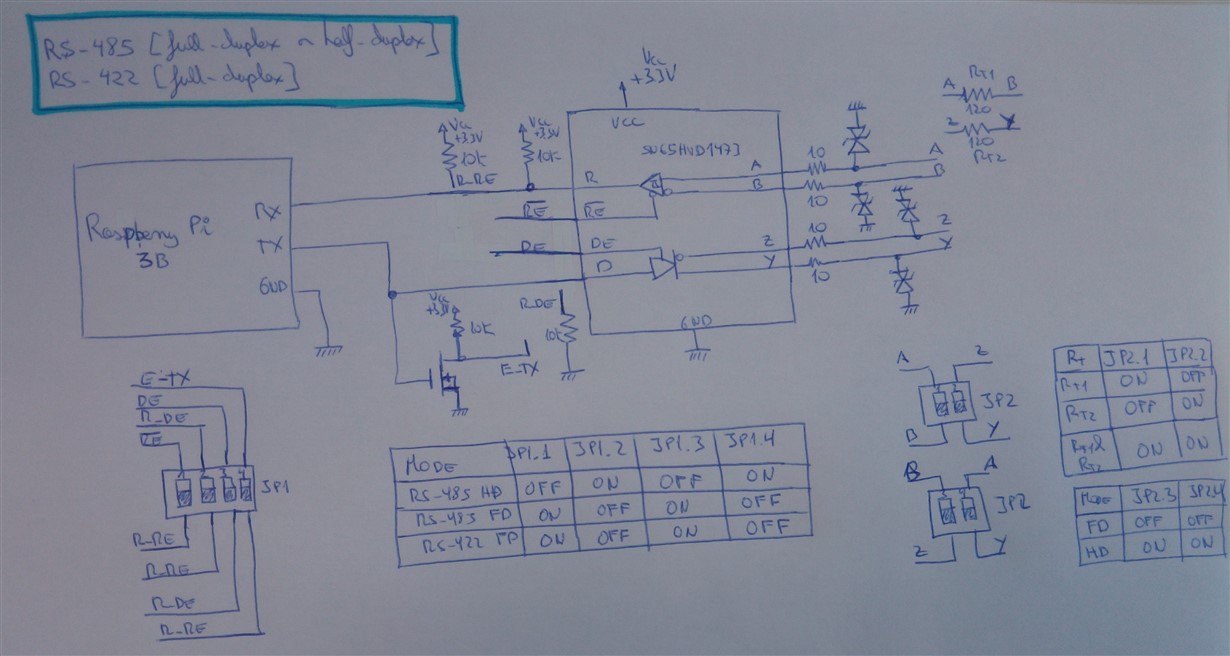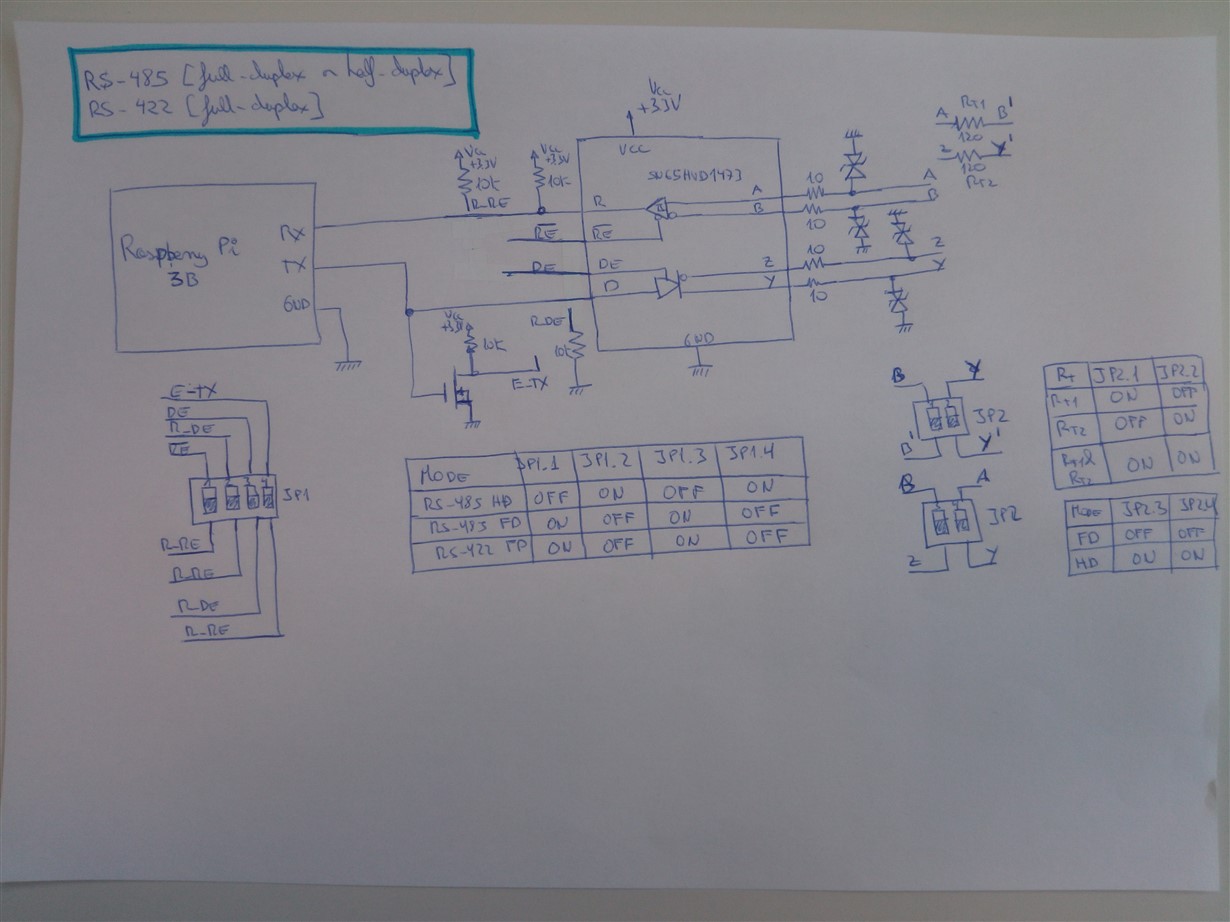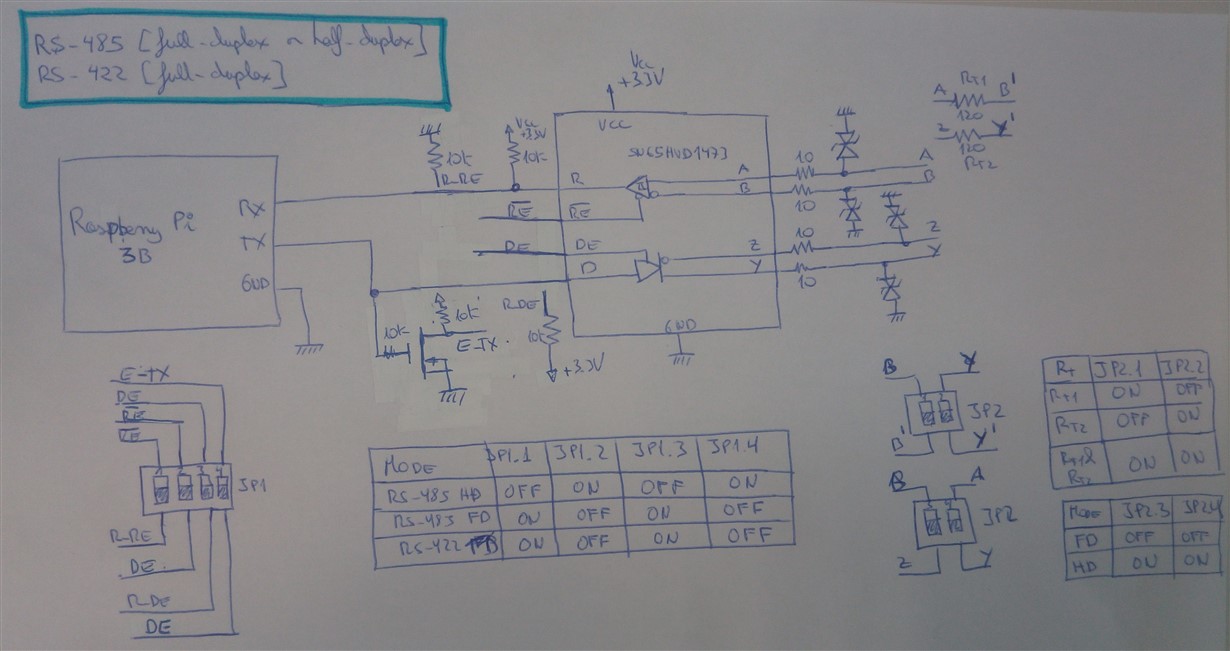Hi everyone,
I'm designing a shield board for the Raspberry Pi 3B with the possibility of using RS-485 or RS-422 (With some jumpers) and using a configuration similar to this scheme for activating the transmission pins with a MOSFET transistor (in RS-485 mode):
The question is: Can I use this Ic for RS-422 purpose?
Best regards.





